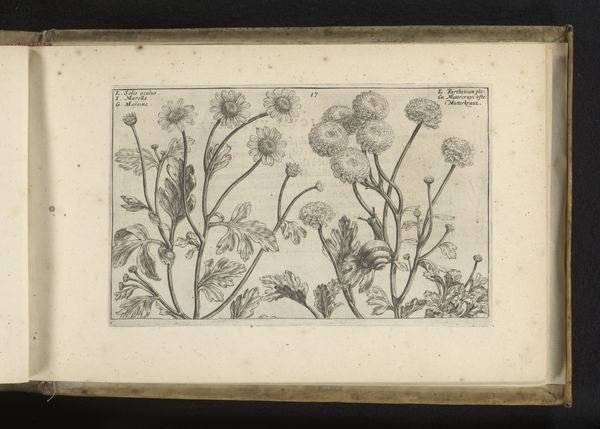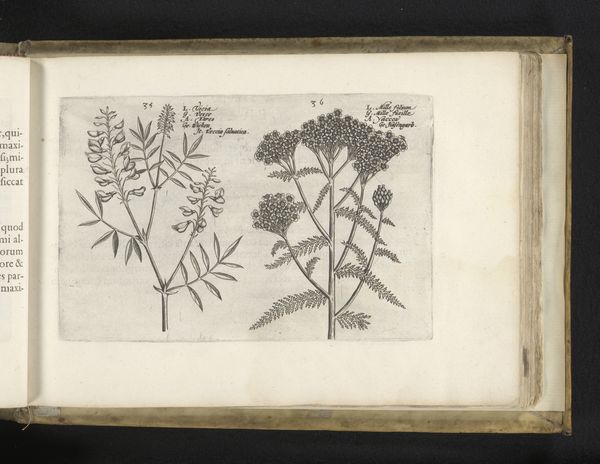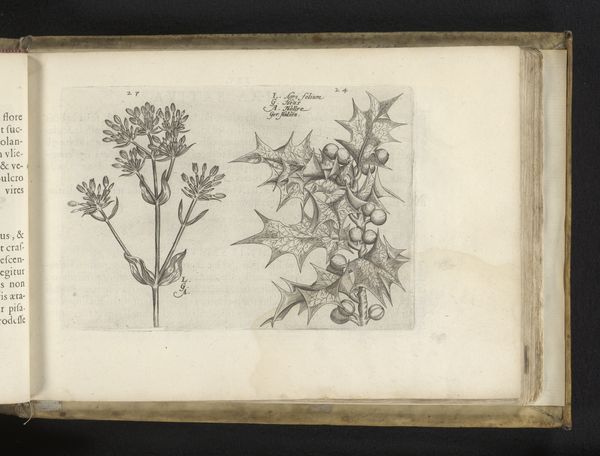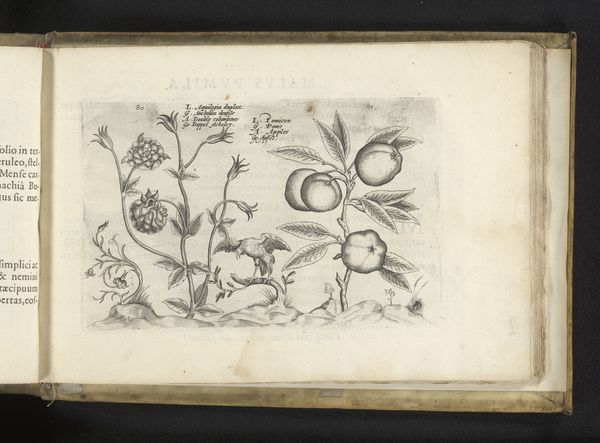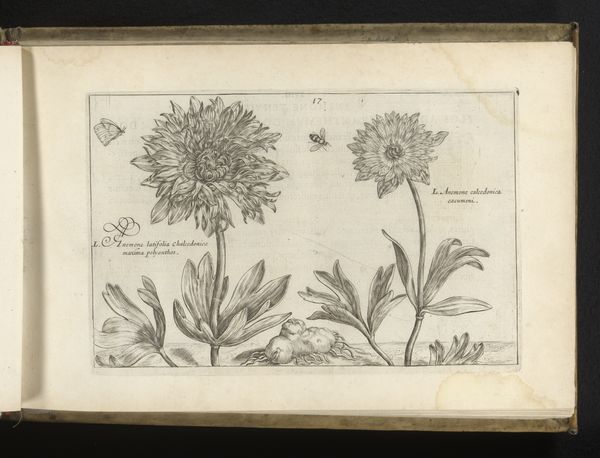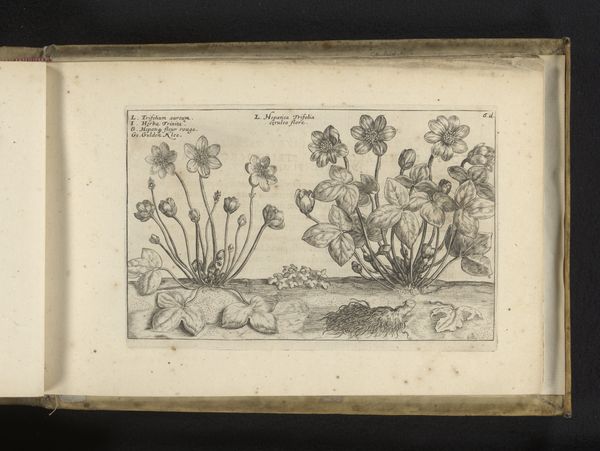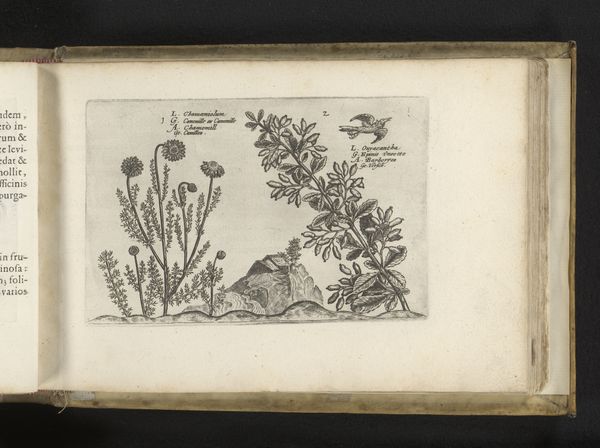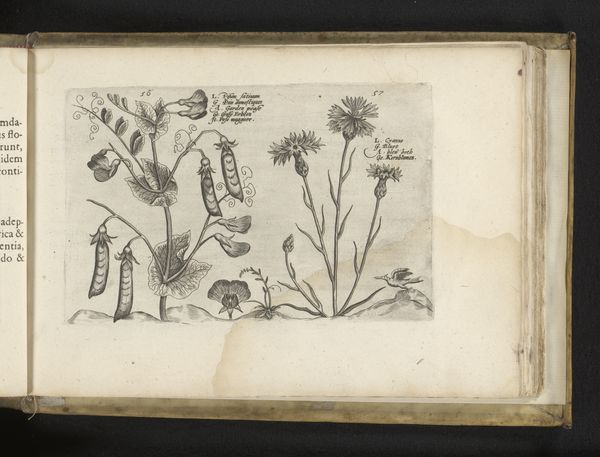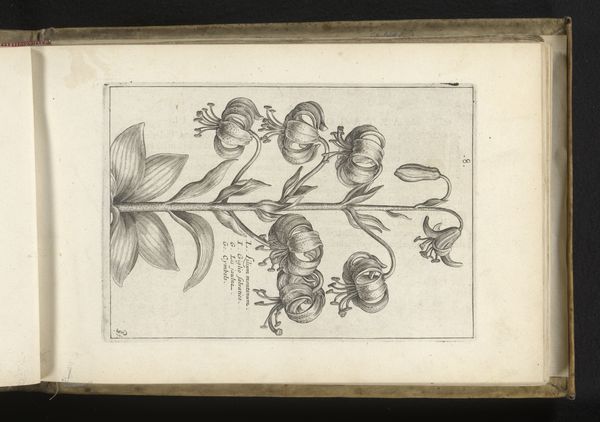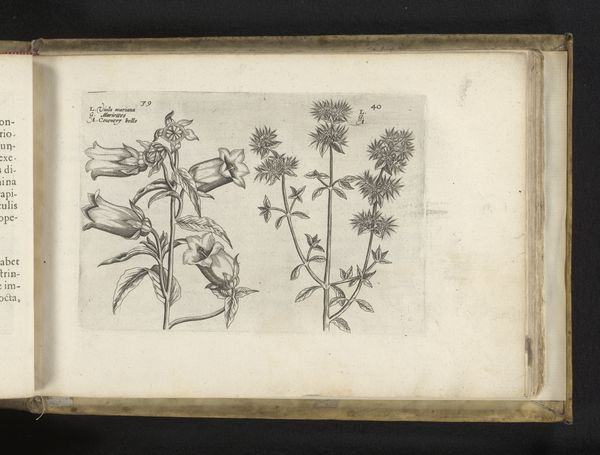
drawing, print, engraving
#
drawing
# print
#
11_renaissance
#
pen-ink sketch
#
line
#
northern-renaissance
#
engraving
Dimensions: height 128 mm, width 201 mm
Copyright: Rijks Museum: Open Domain
This is 'Tuinanjer en brem', a black ink drawing from an unbound book, made around 1620 by Crispijn van de Passe the Younger. Van de Passe was born into a family of artists who were part of the Protestant community that fled religious persecution in France and the Netherlands. This delicate drawing depicts a garden carnation and broom, plants that carry rich symbolism. Carnations often represent love and marriage, while broom can symbolize humility and cleanliness, virtues often associated with women. During the 17th century, botanical illustrations gained popularity not only for scientific purposes but also as symbols of wealth and status, aligning with a growing interest in natural sciences. This intersection of art, science, and societal values offers insight into the cultural lens through which nature was perceived. In its exquisite detail, the drawing invites us to reflect on the intimate connection between nature, culture, and personal identity during a time of significant social and intellectual transformation.
Comments
No comments
Be the first to comment and join the conversation on the ultimate creative platform.

